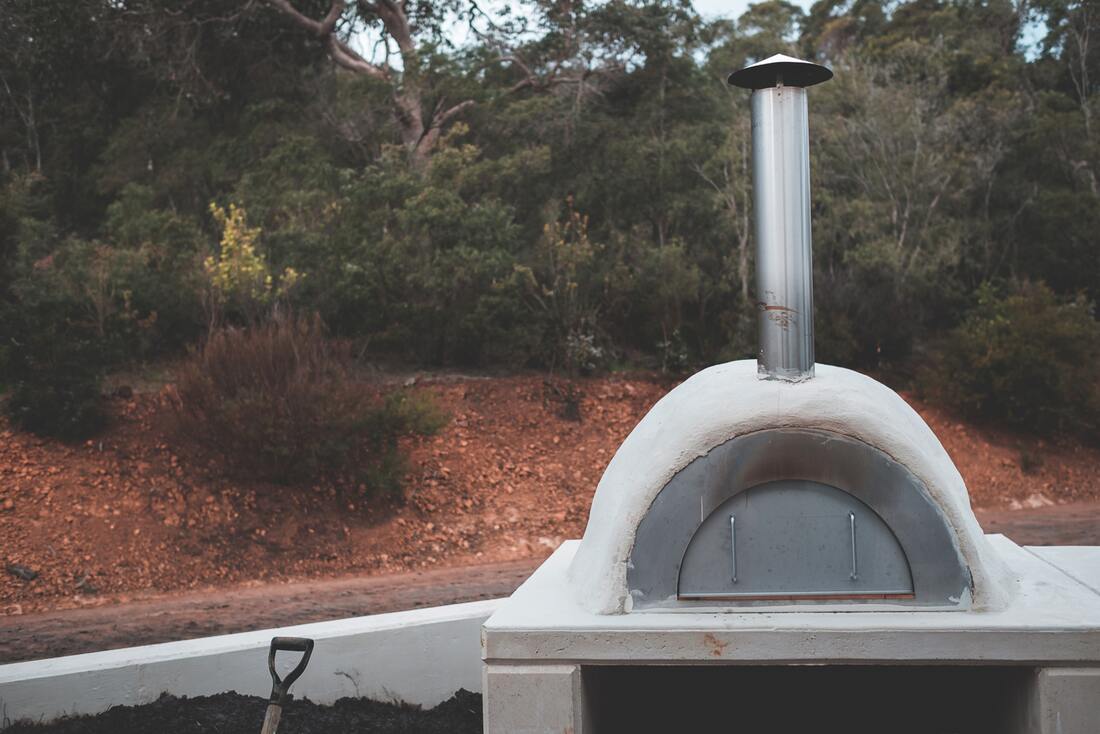|
0 Comments
Realtor Rant By Jason Gelios In this personal interview with Jason Gelios, discussion is had about beating the force of average and what people need to know to create and live a life they truly want to live. Article by Barbara Eisner Bayer Be the home on the block that bugs run from. A lush spot for outdoor entertaining?
Great. Perfect. A constant swarm of insects that invade your patio and home? No, thank you. Here’s how to keep bugs away from your patio and yard, and from getting inside your house. #1 Install Patio Fans Mosquitos may have a tough sting, but they’re wimps when it comes to standing up to a breeze. Patio fans can keep your outdoor entertaining space free from mosquitoes (and other little flyers) with the flip of a switch. And you’ll get the benefit of a cool breeze. #2 Don’t Mulch Too Much (or Too Little) While mulching is generally a good thing for curb appeal, overdoing it can cause problems. It could give cockroaches and ants the ideal environment to nest and find their way into your home, says Brittany Campbell, an entomologist and technical services manager at Control Services in Omaha. As mulch decomposes, it generates heat while providing cover for brooding pests. It can even help mice tunnel into your home. So keep mulch at least 12 inches away from the foundation — or use inorganic mulch, such as rock or gravel. But don’t go in the opposite direction and forgo mulching altogether, leaving the ground essentially bare. Yellow jackets make their nests by tunneling into bare dirt. #3 Get Rid of Standing Water You probably know this one already. But did you know your gutters and downspouts may harbor multiple mosquito maternity wards? Clean out gutters and downspouts regularly to prevent clogs that can trap water and give those nasty stingers a place to breed. Also make sure to keep kiddie pools, buckets, and watering cans empty when not in use. Even your beloved birdbath can be an issue. “Make sure you get one with running water, so you don’t inadvertently create a mosquito breeding ground,” says Kevin Espiritu, home landscaping expert and author. #4 Keep Your Yard Trimmed, Mowed, and Tidy Pull out that lawnmower regularly and keep your garden shears sharpened. “Ticks like to hide in tall grass and wait for a passing human or animal, while bushes or tree limbs touching the home can provide easy access for pests to get indoors,” says Campbell. Plus having a tidy yard makes for good curb appeal. #5 Add Landscaping Plants That Bugs Hate Bugs hate strong scents of mint or citrus. Mix plants with those scents into your landscaping, especially near the porch, patio, or deck for added beauty and functionality. Here are some pest-repelling plants and the bugs that hate them: Basil: Flies, mosquitoes Catnip: mosquitoes, ticks, Flies, cockroaches Chrysanthemums: roaches, ants, ticks, Fleas, bedbugs Lavender: moths, Fleas, Flies, mosquitoes Citronella: mosquitoes Geranium, lemon scented: mosquitoes Lemon thyme: mosquitoes Marigold: mosquitoes Rosemary: mosquitoes #6 Paint Your Home Lighter Colors Studies show that bugs see dark and bright colors more easily, which is why people are often advised to wear light-colored clothing to repel them. The same principle may work for your home. Choose lighter shades of paint color for your home’s siding, doors, trim, and other features such as fencing, patio, and decking to make them less attractive to mosquitoes. And if pesky birds are a problem, avoid paint that’s the same color as their favorite foods. Just be sure the paint job fits into the neighborhood and enhances your home’s beauty. Bugs are a pain, but hurting your home’s value is more painful. #7 Build a Bat House If you live in an area where bats are local, lucky you. Really. Harness their appetite for insects to control pests in your yard. You can invite them to be your permanent guests by building a bat house. According to Bat Conservation International, one small bat can consume up to 1,000 mosquitoes per hour! Article by Jan Soults Walker Make an outdoor living area comfy long after the sun sets or the leaves turn.
There are so many reasons to enjoy outdoor living beyond summer. There’s the beauty of fall and the cool, crisp weather. And then, how about saving big bucks on dining out and entertainment by savoring great food, drinks, and company — plus awesome scenery — right at home? Here are three ways to get a happy vibe going in your own backyard. Light the Deck or Patio The sun sets sooner on your outdoor living space in the fall, but that shouldn’t limit the hours you use your deck or patio. Adding low-voltage or solar outdoor lighting fixtures lets you party or relax well after dark. With both lighting types, you can:
Low-Voltage Lighting Low-voltage fixtures clip onto a safe, 12-volt cable connected to a transformer, which plugs into a GFCI-protected 120-volt electrical outlet. A timer or light-sensitive control automatically turns lights on and off. For a pool area, a kit with eight LED step lights and 12 hardscape lights, plus wiring, a transformer, and installation, would cost about $3,000. #1 Solar Outdoor Lighting Solar outdoor lighting fixtures don’t need cables and transformers. They simply turn themselves on automatically after dark. Each standalone fixture stakes into the ground or secures to a deck or exterior surface. Because a sunlight-charged battery powers the bulb, you’ll save energy. Solar light fixtures cost $188 to $231 for six lights, with installation ranging from $167 to $271. Solar technology has improved over time. The lights generally include LED bulbs, which emit a large amount of light for their size and the amount of energy used. With about an eight-hour charge from the sun, solar lights can illuminate all evening. That said, the amount of sunlight around your house will greatly affect how the lights perform. Outside solar lights can last three or four years, and the LEDs,10 to 15 years. #2 Get Glowing with a Fire Pit, Portable Fireplace, or Smokeless Fire pit Bring a cozy glow and a stylish focal point to your outdoor living area with a fire pit or portable fireplace. Irresistible for gathering, warming up, and roasting marshmallows, they come in a variety of materials, sizes, and styles. You’ll also find options for fueling your fire with wood, propane, gas, or gel cans. But here’s a warning before you start: Check local fire codes to find out if your community allows the use of a fire pit or portable fireplace on the patio or lawn. (Never use a fire feature on a wood deck.) A fire pit is an open bowl, dish, or pan that varies in size from 24 inches across to about 40 inches. A fire pit may come on a stand (some with wheels) or nestle into a tiled tabletop. Select a model with screening to contain flyaway sparks. A wood-burning fire pit typically costs $500 to $1,300 including installation, and a gas fire pit ranges from $900 to $3,800 including installation. A portable outdoor fireplace ($104 to $498) features a chimney to vent smoke up and away from people. Some portable fireplaces offer 360-degree views of the fire. A smokeless fire pit, or smokeless stove, is a popular choice. Despite the name, they aren’t entirely smokeless, but they generate less ash than a wood-burning firepit. The price ranges from $90 to $600. #3 Warm Up with a Patio Heater Adding a portable patio heater can boost the warmth of your outdoor living area by as much as 15 to 25 degrees in the fall or spring. You’ll find three basic models: 1. Free standing units resemble large floor lamps. You can set them anywhere on your patio that will accommodate their 7-foot to 8-foot height. Some models include wheels for mobility. Expect to pay $153 to $887, depending on heat output and fuel source. 2. A tabletop patio heater rests on a table, bench, or garden wall. These compact units typically produce less heat than tall, freestanding models. Prices range from $72 to $148. 3. Ceiling- or wall-mount patio heaters free up floor and table space, and typically emit heat via a halogen lamp. Prices vary from $112 to $866. Make your selection based on how much outdoor living area you want to heat and whether you want a model powered by electricity or natural gas (each requiring a connection) or with a propane tank, which allows mobility. Article by Leanne Potts Photo courtesy of Pexels Don’t do built-in seating. Your butt (and budget) will thank you for it.
Relaxing around a fire and under the stars is the place for a perfect night. But at what cost? A built-in fire pit can cost upward of $5,000 for an above-ground, propane-burning brick fire pit without installation. That’s a pricey upgrade. Don’t worry. With these money-saving tips, you can build a fire pit for less than a grand — and still have a fabulous one: #1 Choose Wood Instead of Gas Gas fire pits are more expensive because you’ll have to hire a plumber to run the gas line and an electrician to power the pit. A wood fire pit has none of that cost, which will run at least several hundred dollars. Besides, who doesn’t love the smokey ambience of a wood fire? #2 If You Want Gas, Put It Close to Your House OK, not everyone loves an ashy, smoky fire pit. If you do want the simplicity of gas, you can get it most cheaply by keeping that gas line as short as possible. The farther from your house that plumber has to run the gas line, the longer they’ll be there. And the longer they’re there, the more it will cost. And remember the electrician you’re going to pay to run wires to power the automatic starter? Same thing. #3 Skip the Built-In Seating Those stone benches in a semicircle around a flaming fire pit look like money. That’s because they’re made of it. Built-in benches that will seat six people with a comfortable amount of personal space can cost as much — or more — as the fire pit itself. A resin Adirondack chair can cost $150 or less. Plus, chairs are easier on your butt as well as your wallet. “Built-in benches look cool, but no one wants to sit on them,” says Aaron Rogers of Southern Poolscapes. “They’re really uncomfortable.” #4 Don’t Do Custom Anything You can have a fire pit designed just for you. One-of-a-kind. But unless you’re a trust-funder or just like spending money like one, stick with a contractor’s standard build. Most offer prefab, modular units that cost at least half as much as a custom build. “I’ve put in custom fire pits that cost as much as $7,000 — just for the pit,” Rogers says. That means the patio cost even more. Yowsa! #5 Go With a Paver Patio Flagstone gives you the natural beauty of real stone, but it costs $15 to $30 per square foot for patio flooring and $25 per square foot for flagstone pavers. Unless you’re making a one-person pit (no judgment, introverts), that’s gonna add up. A paver patio looks manufactured, but it costs $6 to $10 per square foot. “Concrete pavers are a good way to cut costs and still have a good-looking patio,” says Ted Essig of Sky Valley Landscape. #6 Select an (Almost) Smokeless Fire Pit Smokeless fire pits, or smokeless stoves, aren’t entirely smokeless. But even though they’re wood burning, they generate less ash than wood fire pits The list of pros is extensive: durable, easy to maintain, efficient, usually made of stainless steel, and sometimes portable. Keep in mind that some aren’t safe to use on decks, so for those, you’ll need a heat shield or fire pit mat. The price ranges from about $90 to about $600 if you want a high-end Solo Stove. #7 Choose a Decomposed Granite Patio (It’s the Cheapest!) It looks like sand. It isn’t fancy. But it’s cheap as heck. A pro can lay this stuff for as little as $2 a square foot. Very important: Heavy rainfall can wash away a decomposed granite patio. If you live in Phoenix, decomposed granite is a great option. If you live in New Orleans, keep shopping. #8 DIY a Fire-Pit Kit If you’re handy, DIY it. You can get a kit for a wood-burning fire pit for $130 and up. (You can buy kits for gas fire pits, too, but they cost a lot more, and you’ll still need to run a gas line.) The easiest fire-pit kits are made of modular stone that you can stack, no mortar necessary. They’re like Legos for grown-ups. Each brick has a raised edge that makes it sit securely on the one below it. The only tool you’ll need is a wrench. But be prepared: These kits can weigh as much as half a ton. Buy one you can have delivered. #9 DIY the Patio, Too If you’re building the pit, why not build the patio, too? It’s just a floor, so no design skills required. In order of difficulty: A decomposed granite patio is easiest to DIY. Pavers are next, followed by flagstone. “Fifty to 60 percent of a patio cost is the labor,” Rogers says. You can do this, thrifty homeowner. Go to YouTube, search “How to build a patio,” and get going. If you are looking for a change and are planning a relocation, there are many aspects you need to look into before making any decisions. Naturally, you want a fantastic house, preferably an upgrade from your current one. However, you should absolutely research the neighborhood your dream home is in before finalizing the purchase. The last thing you want is to make a huge investment and later find out that the area does not provide some of the amenities essential to you. After all, your home should be a place where you feel safe, comfortable, and happy. Whether you’re moving across the city or the country, there are a few smart things to look for in a new neighborhood. Safety First Safety is one of the most important factors to consider when selecting a new neighborhood. You want to live in an area where you feel secure and comfortable walking around, both during the day and at night. When checking out houses, look up the local crime rates and research the area's safety features. For example, if there are streetlights on every block, it’s generally a sign that the neighborhood takes safety seriously. Additionally, you may want to look at the type of housing in the area. Do the homes have alarm systems? Are there any gated communities? These factors can all contribute to the overall safety of the neighborhood. Access to Amenities Depending on your lifestyle and preferences, you may want to look for an area with easy access to grocery stores, restaurants, parks, gyms, and other facilities. Some homeowners prefer to be as close to these as possible, while others prefer to be more secluded. Consider what you need and want nearby, and make sure the neighborhood you’re considering can provide those things. If you like to have supermarkets and restaurants nearby, ensure they’re in the area Public Transportation If you don’t drive, public transportation is one of the essential things to look for in a new neighborhood. Check out the local bus routes, subway lines, and commuter train stations. You’ll want to make sure that the area you’re considering has easy access to public transportation so you can get to work, school, or other activities without difficulty. Good Schools If you have children or plan to have them in the future, the quality of the local schools is an essential factor to consider. Research the schools in the area, read reviews, and check their ratings. Consider the distance from your potential home to the school and make sure that it’s within a reasonable distance. Demographics The demographics of a neighborhood can have a significant impact on your quality of life. Consider the age, income, and cultural background of the people who live in the area. If you have children, you may want to live in a family-friendly neighborhood with other families with children. On the other hand, if you are single or a young couple, this may be the opposite of what you need. And if you are a retiree, you may prefer a quieter, more peaceful neighborhood. Walkability Walkability is becoming increasingly important to many people and one of the top things to look for in a new neighborhood. A walkable neighborhood has sidewalks, bike paths, and parks, making it easy to get around without a car. You can check the Walk Score of the neighborhood you’re considering to determine how walkable it is. Walkability may be one of the things to look for in a new neighborhood Pet-Friendliness You’ll want to look for a pet-friendly neighborhood if you have pets. Consider the number of parks in the area and if there are any pet-friendly cafes, restaurants, or shops. You may also want to look at the local animal ordinances to see if there are any breed restrictions or leash laws that could impact your ability to have a pet in the area. Community Involvement Community involvement can be an excellent way to feel connected to your new neighborhood. Look for local events, farmer’s markets, and festivals that encourage community engagement. You may also want to consider the availability of volunteer opportunities or neighborhood organizations that you can join to get to know your neighbors better. Future Development This may be one of the most important things to look into when choosing a home. It’s essential to consider the future development plans of the neighborhood you’re taking into account. Check with the local government or planning department to see if any major projects are planned in the area, such as new shopping centers or highways. These developments could significantly impact the noise level, traffic, and overall character of the neighborhood. Most importantly, they can take years to finalize, and if it is something that bothers you, you will end up miserable with your purchase. Our friends at Pro Movers Miami say that such conditions, unfortunately, drive many homeowners to move out and sell their houses. Home Values Finally, you’ll want to consider the home values in the area. If you’re looking to buy a home, it’s important to understand the area's current and future home values. Research the average price of homes in the neighborhood, and look at the trends over the past few years to get an idea of whether the value is increasing or decreasing. You can also look at the sale history of homes in the area to see how long homes typically stay on the market and whether they sell for the asking price or less. Researching the home values in the area is important Understanding the home values in the area can help you make an informed decision about whether it’s a good investment to buy a home in that neighborhood. It can also help you negotiate a fair price when making an offer on a home.
Ready to Move In? If you have finally chosen your dream home in the perfect neighborhood, it’s time to move! And if your new home happens to be in South Beach, FL, ask a local team for help and hire local movers to do all the packing and heavy lifting. It will make the experience so much more relaxing and enjoyable. Final Thoughts on Things to Look for in a New Neighborhood When making one of the most important decisions of your life, there are several smart things to look for in a new neighborhood. By researching and considering these factors, you can find a neighborhood that fits your lifestyle and meets your needs. Remember, your home should be a place where you feel safe, happy, and comfortable, so take your time and make a well-informed decision. |
AuthorJason Gelios is a Husband and Father. After that, a Top Producing REALTOR®, Author of the books 'Think like a REALTOR®' and 'Beating The Force Of Average', Creator of The AskJasonGelios Real Estate Show and Expert Media Contributor to media outlets across the country. Archives
July 2024
Categories |











 RSS Feed
RSS Feed